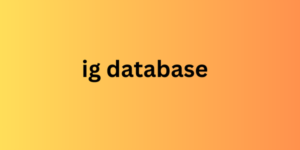The definition of yield management may give you a broad idea of what the strategy looks like and how hotels can use it. To give you a sense of what it’s all about, today we’re going to take a deeper dive.
In the hotel business, having empty rooms = lost revenue, and Yield Management is all about filling those price gaps and making the most of them possible. This allows you to sell different room types with the right marketing strategies, at different prices based on different situations.
Yield Management is based on market demand, both supply and demand: Guests pay different prices for the same room based on a variety of factors, so you should be able to change your room rates to increase revenue based on those factors as well.
In the hospitality and service industry, Yield Management encompasses all methods of pricing to increase profits from the same product, with an emphasis on selling to the right target audience at the right time and place.
And here are the essentials that small hotels should know.
How to Manage with Yield Management for Hotel Business
For the hotel business, yield management helps you identify demand for different room types by a given date and identify the overall supply of rooms to help you understand and visualize the maximum price a guest is willing to pay for a given room.
Hotel Yield Management is based on historical data and insights ig database to understand future market room demand, and importantly, help you set the right rates for each period.
The Importance of Hotel Yield Management
What if you don’t use Yield Management in your hotel management? Let me tell you, you are missing out on opportunities to increase bookings, missing out on great promotions for guests to compete with competitors, missing out on great profits, and starting to lose track of when your hotel is at its peak.

And to increase profits, you need to sell enough rooms to cover all fixed costs, then price the remaining rooms at a higher rate to generate more revenue and profit for the business.
How to Use Yield Management Strategy
There are many effective pricing strategies available today to manage yield, and here are 4 Yield Management strategies for hotel management that can increase overall room bookings and maximize profit per booking.
Rate strategy
It is a strategy to set prices differently based on various factors such as…
Rack rates: Determined by room type (suite vs. standard room, sea view vs. pool view), bed type, and number of guests. These are standard room rates without any promotions or discounts.
Group or tour room rates: determined by occupancy (minimum number of guests per room, lower rates for multiple bookings in one transaction), including discounts for larger groups booking multiple rooms, and can also be leveraged to partner with tour operators to increase occupancy.
Package price: This is the price for various events such as sports events, parties, or other special services such as tickets, transportation, etc.
Promotional price: This is a discount price for customer groups such as students, business people, and airline staff.
Seasonal pricing strategies
Seasonal Strategy is a pricing strategy that sets prices higher during peak demand periods and offers discounts to attract customers during low demand periods.
When you set different rates for different periods based on market demand, you can set room rates in several ways:
High season and low season prices
Different room rates from Monday to Sunday
Time-based pricing (e.g. use of a room or facility for a specified period of time)
Peak periods (e.g. public holidays)
Burned profile or last minute price
Up-selling and Cross-selling strategies
Another way to increase revenue for the hotel business is to use up-sell and cross-sell strategies to all guests. This is a win-win proposition. You offer an upgraded stay, making it more convenient for them, and you benefit from both guest satisfaction and increased revenue.
